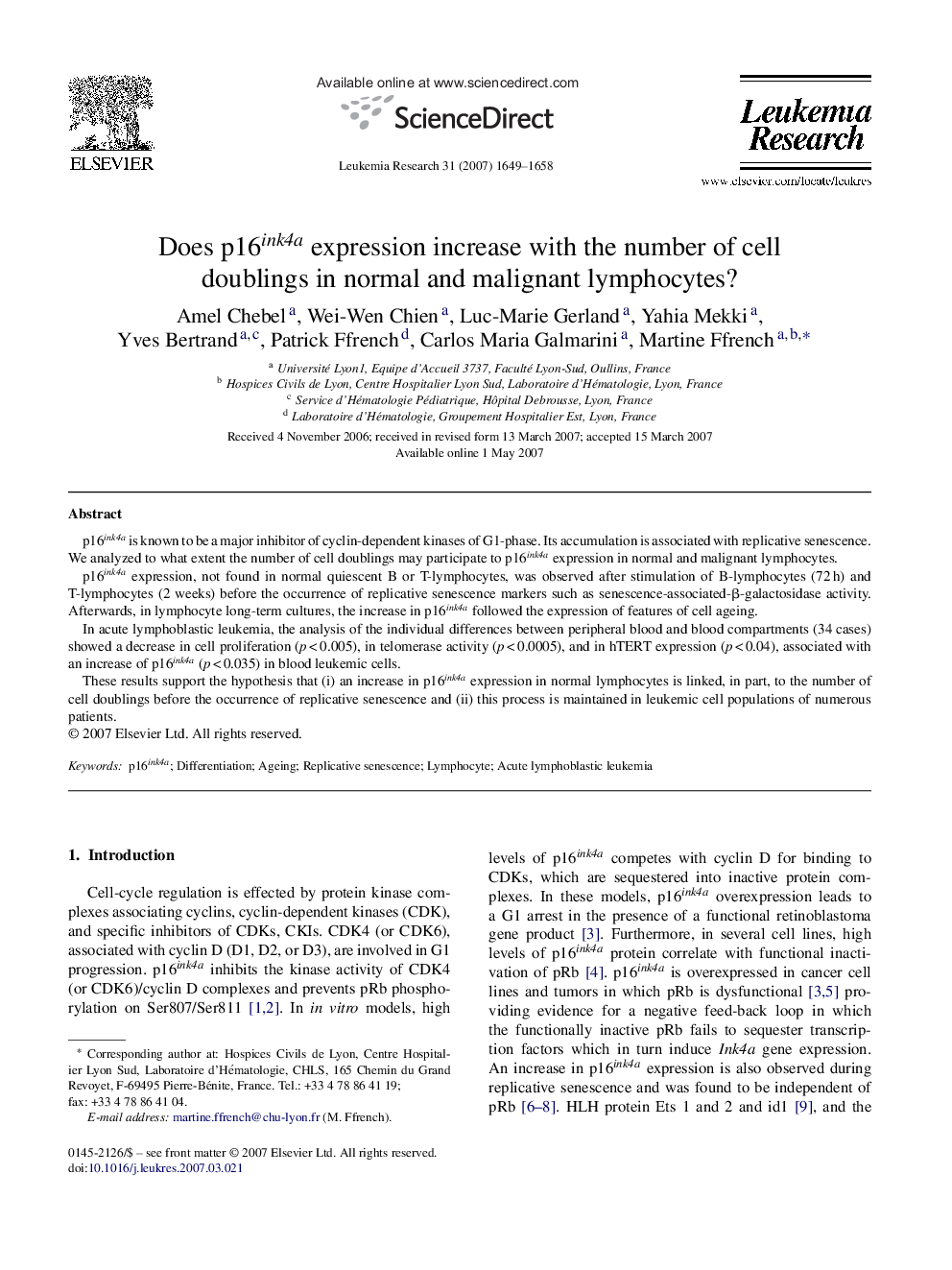| Article ID | Journal | Published Year | Pages | File Type |
|---|---|---|---|---|
| 2139247 | Leukemia Research | 2007 | 10 Pages |
p16ink4a is known to be a major inhibitor of cyclin-dependent kinases of G1-phase. Its accumulation is associated with replicative senescence. We analyzed to what extent the number of cell doublings may participate to p16ink4a expression in normal and malignant lymphocytes.p16ink4a expression, not found in normal quiescent B or T-lymphocytes, was observed after stimulation of B-lymphocytes (72 h) and T-lymphocytes (2 weeks) before the occurrence of replicative senescence markers such as senescence-associated-β-galactosidase activity. Afterwards, in lymphocyte long-term cultures, the increase in p16ink4a followed the expression of features of cell ageing.In acute lymphoblastic leukemia, the analysis of the individual differences between peripheral blood and blood compartments (34 cases) showed a decrease in cell proliferation (p < 0.005), in telomerase activity (p < 0.0005), and in hTERT expression (p < 0.04), associated with an increase of p16ink4a (p < 0.035) in blood leukemic cells.These results support the hypothesis that (i) an increase in p16ink4a expression in normal lymphocytes is linked, in part, to the number of cell doublings before the occurrence of replicative senescence and (ii) this process is maintained in leukemic cell populations of numerous patients.
